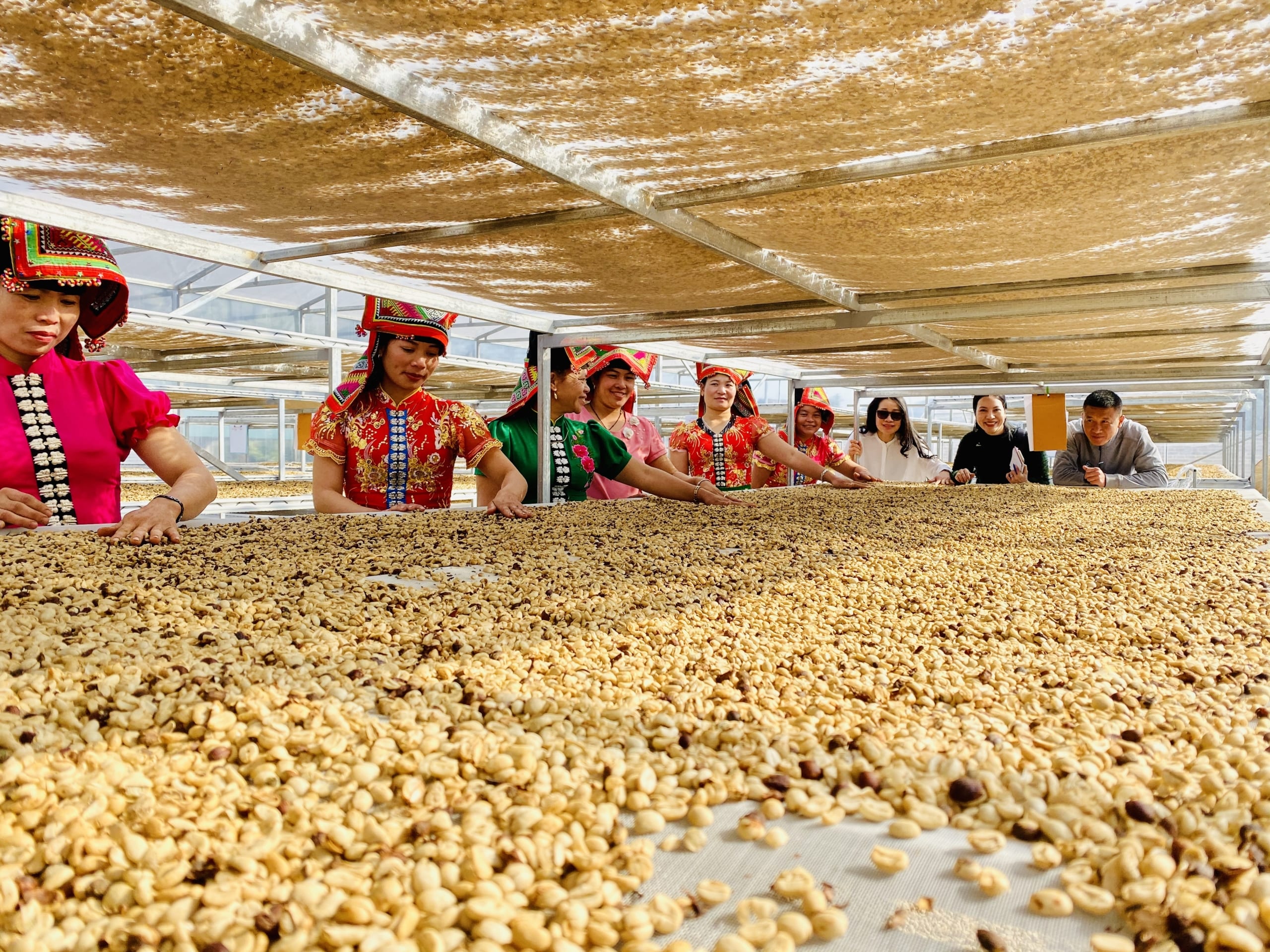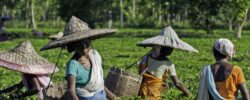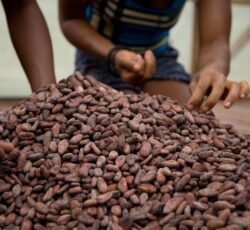Why the world needs more female farmers
Every year, International Women’s Day seems to be returning earlier, as we are still far from solving gender inequality. As we just shone our lights on the struggle that farmers worldwide are faced with, the harsh reality is that female farmers in particular are even worse of. Today, we invite you to reflect on why this problem is just the tip of an iceberg, built by old social structures and why we need more female farmers.
Not a single sector was spared by the COVID-19 pandemic. And in all of them, it were the most vulnerable stakeholders who were hit hardest. The food sector in particular dealt with a huge blow. The system’s inefficiency became crystal clear as long supply chains did not fill the supermarket shelves due to local lockdowns, while reports wrote about farmers and food workers who struggled to maintain their income.
In a capitalist world, efficiency is often used to evaluate outcomes. But really, we ought to broaden our horizon. The lack of rights that should be protecting the people producing our food proved to be cruel, and once again, placed women in the worst position. While they make up 39 per cent of the global workforce, women also account for over half of overall job losses during the pandemic. A report from the UN Women showed that women were more likely to increase their unpaid workload such as the amount of time spend on household chores and caring duties. Out-of-school children or related corona patients were among the “new” responsibilities. At the same time, a so-called ‘shadow pandemic’ unfolded, as five times as many calls to helplines were registered to report domestic violence.
Why female farmers are hit harder
Shifting our focus to women in agri-food, female farmers weren’t doing too great already. Even before the pandemic, women-run farms produced 20 to 30 per cent less than farms run by men. And no, this ‘crop gap’ has nothing to do with an aptitude for farming, but everything with the gender-specific obstacles. For one, women have less access to credit, especially in developing countries where cultural norms and lack of collateral often prevent women from borrowing money. Without adequate funds, female farmers are less likely to buy and use fertilizer, drought-resistant seeds, sustainable agricultural practices, and other advanced farming tools and techniques that increase crop yields.
We also need to talk land rights. In developing countries, only 10 to 20 per cent of landholders are women. In some parts of the world, women still cannot legally own or control land. Women who become widowed risk disinheritance, as their property rights are often conditional to marriage. Furthermore, migrant family members unable to find jobs in urban areas may return to their villages, creating greater competition over land. These dynamics will put women’s already fragile land tenure security to the test, risking widening of the gender gap in investments, productivity and incomes.
Community engagement
Although under the SDG’s we try to make gender equality a universal challenge to be achieved collectively, it is important to realise that different contexts bring different challenges for women worldwide. Clearly, there’s still room for legislation improvements, and at the same time it is increasingly common to see large food companies making sure their ESG ambitions are printed on their packages. However, both legislation and fair price initiatives mainly benefit men. Research shows that the best outcomes still come when structural problems are reviewed in practice.
Looking into that, in 2009, the World Cocoa Foundation launched the Cocoa Livelihoods Programme, a 10-year initiative focused on improving the livelihoods of cocoa farmers in Cameroon, Côte d’Ivoire, Ghana and Nigeria. One specific goal of the programme was building capacity of at least 15,000 women farmers. They ended up teaching good agricultural practices to 43,122 women. Following, women having had additional training such as farm management and entrepreneurship proved to actually mobilise other women in their communities.
The project however reached mostly literate farmers, raising the question of how to include all types of women wanting to join the food system. This challenge inspired researcher Anna Laven to found Rokbar, a chocolate brand owned and produced by women in Peru. “We have a system that is not working for women”, she argues. “The women we reach are often the ones that are not married, and despite also contributing to the production, they are not on the radar and are known as mere helpers on their farm, never selling or controlling the income from cocoa.” Even finding female partners to launch Rokbar was a challenge, she remembers. Although she was working in Africa at the time, the idea only took off when she met Lisi Montoya, a chocolate maker in Lima, who was frustrated with the lack of production in the region. Together with Peruvian chocolate company Shattell, they finally established the brand, together with cocoa cooperatives from the Peruvian Amazon basin.
Societal structures: beating old known obstacles
After years in the field, Laven observed that the sector is dominated by older men that tend to represent more traditional norms. This makes it very difficult not only to reach younger women, but to basically reach younger people as a whole. “They are the gatekeepers that organise the sector in a way that reinforces the existing inequalities”, Laven explains. Developing a simplified and gender-inclusive environment, thus is essential to ensure greater accessibility. In the current environment, whole communities lose not only in economic terms such as income, but also in terms of security, inheritance and status.
“It’s not about pushing the youth or women into an economic area, but about removing barriers, and giving people more options to choose for something that works best for them”, Laven argues. Although different major problems such as child labor, poverty and deforestation became ghosts in the farming sector, this sector is still the best option many communities have. And even the before mentioned problems can be seen as opportunities to both include women and the younger generation in the sector, guaranteeing its longevity.

It’s not about pushing the youth or women into an economic area, but removing the barriers and giving people more options to choose for something that works best for them
In the cocoa sector, for example, a new innovation allows better use of the pulp of the fruit to make juice. Not only small initiatives such as Rokbar are on it already, but recently Nestlé and Callebaut also put their money on this innovation. The company Kumasi Drinks already made an actual juice out of it, showing there’s potential for more productivity and better returns for farmers. From an environmental perspective, initiatives shifting to agroforestry or regenerative farming are also thriving in Peru and Brazil. All the while, barriers faced by workers in the field, remain being poor infrastructure, hard access to water and access to modern techniques, which we should take as a hint of where governments’ effort could go.
With improved investments in the sector, it would be possible to address other problems intertwined with gender equality, such as the lack of education and facilities for child care. Ultimately, it could help realise greater market access to other products being harvested by cocoa producers, making the whole sector flourish. For now, if you want to reach women, you have to be deliberate and design an alternative system that works for them, Laven argues.
Bridging the gap
Creating a sense of ownership of the products being cultivated is often pointed out as a way to strengthen food producers and their communities. Ngoc Anh Dao, president of the International Women’s Coffee Alliance in Vietnam, saw that in practice in her country, the second major coffee exporter in the world. “We are not praised for our quality, but quantity. So we have an opportunity to add value to our products by simply making it better”, she explains. However, although men and women have their rights insured as they are inserted in a communist regime, the challenge is different: Vietnamese farmers don’t drink coffee.

While we saw men thinking more in terms of the investment of return, we noticed women thinking more in ways the product’s quality could be improved
In Vietnam, coffee is often seen as an enjoyment exclusively for men, mostly foreigners, so the first barrier is to actually introduce the farmers to the beverage that is an outcome of their work. Ngoc Anh Dao explains that although each of the 140 women involved in the programme has a very different story, they all have one thing in common: they really take the customer experience into account. “Once they tried the product and learned what the goal is, we saw them discussing which fertiliser is better for the soil, and making observations about cherries varieties. While men think more in terms of the returns of an investment, we noticed women thinking more about ways in which the product quality could be improved.”
The idea in no-way is to exclude men from this process. Ngoc Anh Dao explains that mixing both skills could allow them to take Vietnamese coffee to the next level. In fact, investing in interventions that work with male farmers as change agents for women’s empowerment proved to be effective in bringing long-term transformation. The World Cocoa Foundation identified that getting the buy-in of men, especially the spouses of beneficiaries, is an important element to consider.
That’s in line with what’s being defended by the Food and Agriculture Organisation: abolishing gender-specific barriers in farming could not only empower women to achieve their highest economic potential, it could actually help feed a hungry world. Most of the approximately 820 million people worldwide who are currently undernourished live in developing countries—the same places where women are key to food production and where they are being left out. Giving women access to the same resources and education as men could increase food production by women by up to 30 per cent, potentially eliminating hunger for 150 million people.
Can small initiatives help realise this scenario? Both Ngoc Anh Dao and Anna Laven remain modest, but do believe their work has been picked up. Together with the KIT Royal Tropical Institute and Pabla van Heck consultancy, Laven did a collab with Mars Wrigley, the world’s leading manufacturer of chocolate, chewing gum, mints and fruity confections, to understand and address the barriers faced by women in cocoa growing communities, and to develop insight-driven recommendations for potential future investments in women’s empowerment and gender equality. The Empathy Report, as it’s called, is available as part of “The Resilience Journey” project. There could be no better choice of words!


